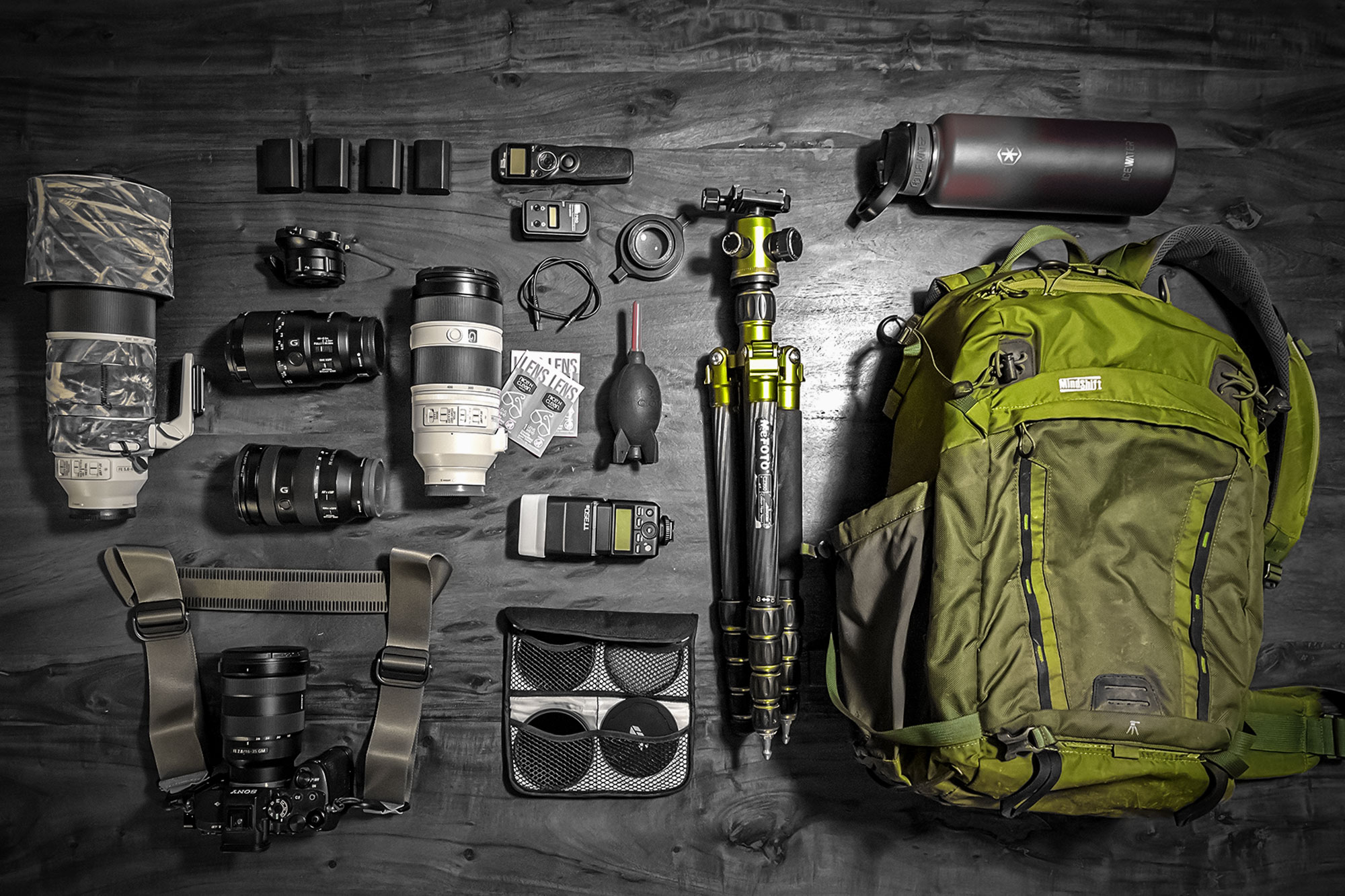
The Essential Gear and Accessories for Landscape and Nature Photography
Trying to decide on the best gear for landscape photography can be confusing and ambiguous unless you’ve had the chance to test it out for years in the field. It’s often acquired piecemeal as you learn what does and doesn’t work. This list of best gear for landscape photography contains items that I actually use and have tested over the years. Each piece is either essential, can make your life easier in the field, or can help capture a broader spectrum of subjects.
“Best” means different things to different people. It’s often equated to being high-end and expensive. In some cases that’s true, but I’ve also included inexpensive gear that I use that performs well nonetheless.
This blog contains Amazon affiliate links. Clicking on them and shopping on Amazon as you normally would supports this blog by generating small commissions.
Camera Backpack–Mindshift 26L
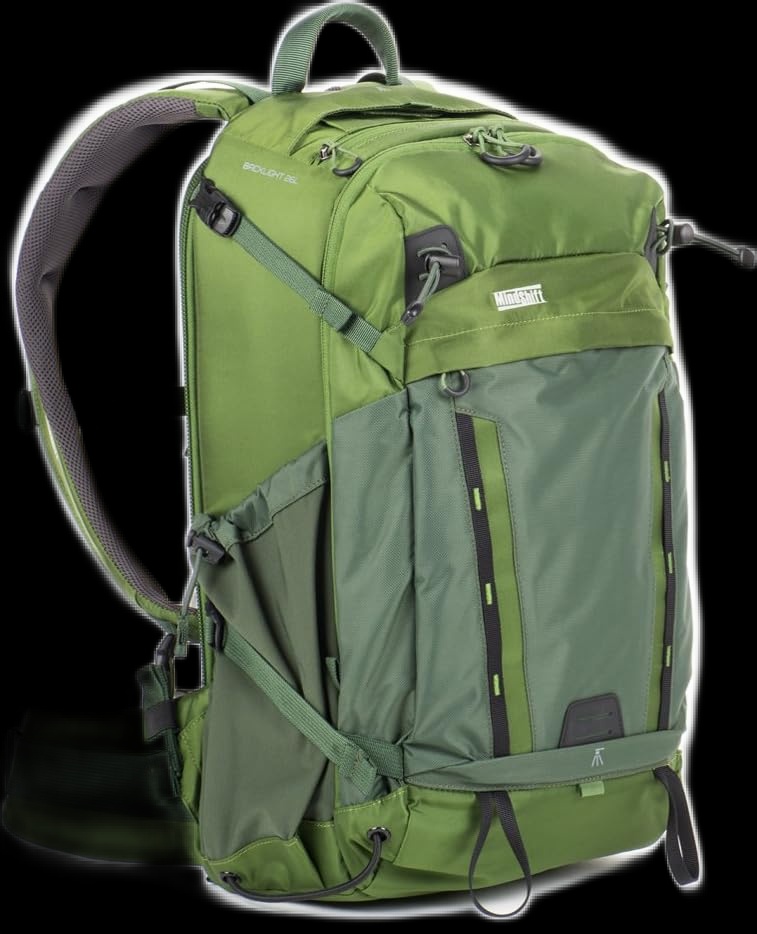 The camera backpack can be considered an essential foundation for nature and landscape photography excursions. I’ve used various models over the years, but all have eventually become uncomfortable and unable to distribute the load evenly. I’ve been using the rear-loading Mindshift 26L camera backpack by Think Tank for over 5 years and it’s still solid, though not quite as pretty. I rate it among the best landscape photography gear because it’s durable, utilitarian and right-sized. 26L is the perfect size for day trips and is the largest permissible carry-on size. It can handle a load-out of full-frame gear, a tripod, water, snacks and a layer of clothes.
The camera backpack can be considered an essential foundation for nature and landscape photography excursions. I’ve used various models over the years, but all have eventually become uncomfortable and unable to distribute the load evenly. I’ve been using the rear-loading Mindshift 26L camera backpack by Think Tank for over 5 years and it’s still solid, though not quite as pretty. I rate it among the best landscape photography gear because it’s durable, utilitarian and right-sized. 26L is the perfect size for day trips and is the largest permissible carry-on size. It can handle a load-out of full-frame gear, a tripod, water, snacks and a layer of clothes.
Memory Cards–Lexar Gold Series
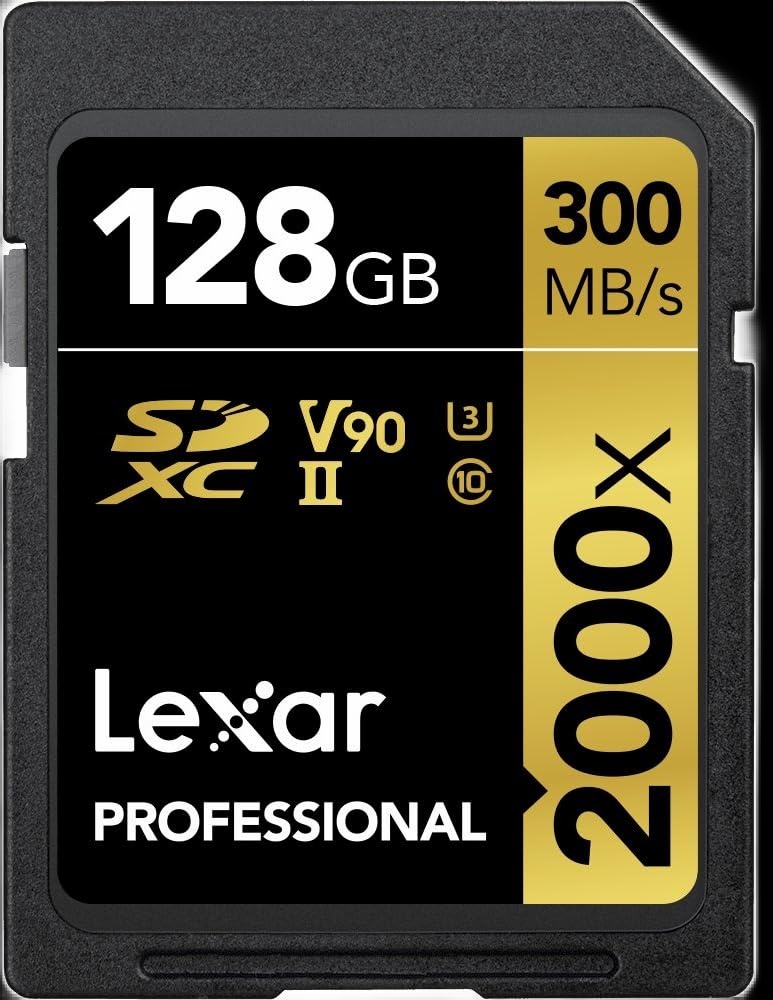 The Lexar Gold series is among the best and fastest memory cards available, and comes in both SD and CF Express versions. I’ve been using them reliably with no card failures. The important specifications of a memory card are storage capacity, and read and write speed. Lexar’s SD version has a 300 MB/s read speed for fast image transfer, and 260 MB/s write speed- fast enough to save 8k video or RAW images taken on burst. For a price, the CF version is exponentially faster, if your camera takes them. As for storage, 128 GB is generally enough capacity for a day of intense shooting or a week-long photo trip. If you shoot wildlife photography in burst mode or want to switch cards less, consider the 256 GB option.
The Lexar Gold series is among the best and fastest memory cards available, and comes in both SD and CF Express versions. I’ve been using them reliably with no card failures. The important specifications of a memory card are storage capacity, and read and write speed. Lexar’s SD version has a 300 MB/s read speed for fast image transfer, and 260 MB/s write speed- fast enough to save 8k video or RAW images taken on burst. For a price, the CF version is exponentially faster, if your camera takes them. As for storage, 128 GB is generally enough capacity for a day of intense shooting or a week-long photo trip. If you shoot wildlife photography in burst mode or want to switch cards less, consider the 256 GB option.
Lower priced cards don’t save lower quality pictures, they just don’t read and write quite as fast. If you shoot mostly landscape photography and don’t need the speed, you won’t notice any difference in performance. The 256 GB Scan Disk Extreme Pro is a great budget option for less than $50!
Polarizer Filter–K&F Concepts Circular Polarizer
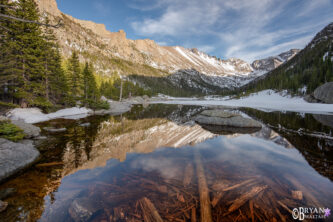 The Circular Polarizer filter (CPL) is among the best gear for landscape photography because it’s essential to capture the full beauty of scenes with water, sky or vivid colors. Read more about the CPL here. Primarily, they remove glare and reflections. This allows a scene’s true colors to show through by eliminating glare on surfaces, and reflection on water so you can see rocks and plants beneath the surface. The CPL also darkens the sky, reduces haze and intensifies rainbows.
The Circular Polarizer filter (CPL) is among the best gear for landscape photography because it’s essential to capture the full beauty of scenes with water, sky or vivid colors. Read more about the CPL here. Primarily, they remove glare and reflections. This allows a scene’s true colors to show through by eliminating glare on surfaces, and reflection on water so you can see rocks and plants beneath the surface. The CPL also darkens the sky, reduces haze and intensifies rainbows.
I’ve been using these K&F polarizer filters for their value and good quality, and particularity because they have a slim profile. I also recommend top of the line B+W polarizer filters. Regardless of brand, make sure to use slim filters because their low profile prevents vignetting.
Pro-tip: If you own lenses with different filter sizes, don’t get separate filters for each lens. Get one set of filters in a standard size and use step-up rings to adapt them to each of your lenses.
Neutral Density Filters–K&F Concept ND Filter Set
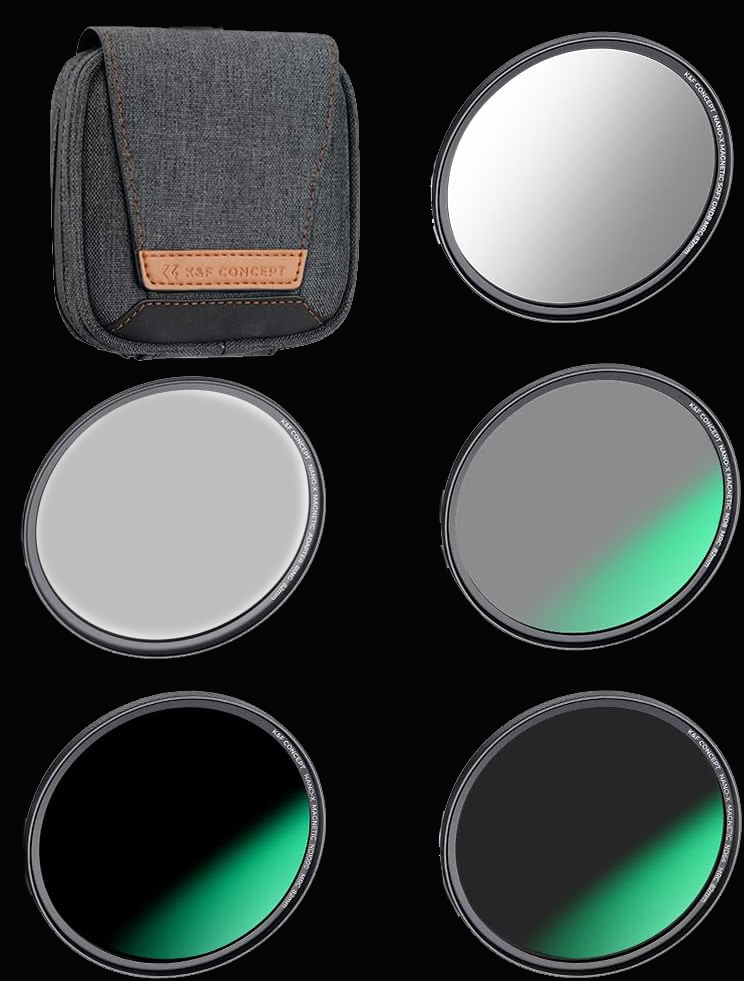 Along with the polarizer, ND filters are the other essential filter for landscape photography that allow creating motion effects like silky water and blurred clouds. An ND filter is a dark piece of glass that blocks light, thereby increasing exposure time. ND filters are available in 1 to 15 stops of light blockage. It’s best to get a set of them to cover all lighting situations. The brighter the ambient light, the darker the ND filter you need. I most frequently use ND16, ND64 and ND1000 filters. The ND 1000, in particular, blocks 10 stops, which can render 15-30 sec exposures in bright daylight. This is enough to capture blurred clouds in the afternoon. Click for a deeper explanation of ND filters and how to use them.
Along with the polarizer, ND filters are the other essential filter for landscape photography that allow creating motion effects like silky water and blurred clouds. An ND filter is a dark piece of glass that blocks light, thereby increasing exposure time. ND filters are available in 1 to 15 stops of light blockage. It’s best to get a set of them to cover all lighting situations. The brighter the ambient light, the darker the ND filter you need. I most frequently use ND16, ND64 and ND1000 filters. The ND 1000, in particular, blocks 10 stops, which can render 15-30 sec exposures in bright daylight. This is enough to capture blurred clouds in the afternoon. Click for a deeper explanation of ND filters and how to use them.
Compact Tripod–MeFoto Globtrotter
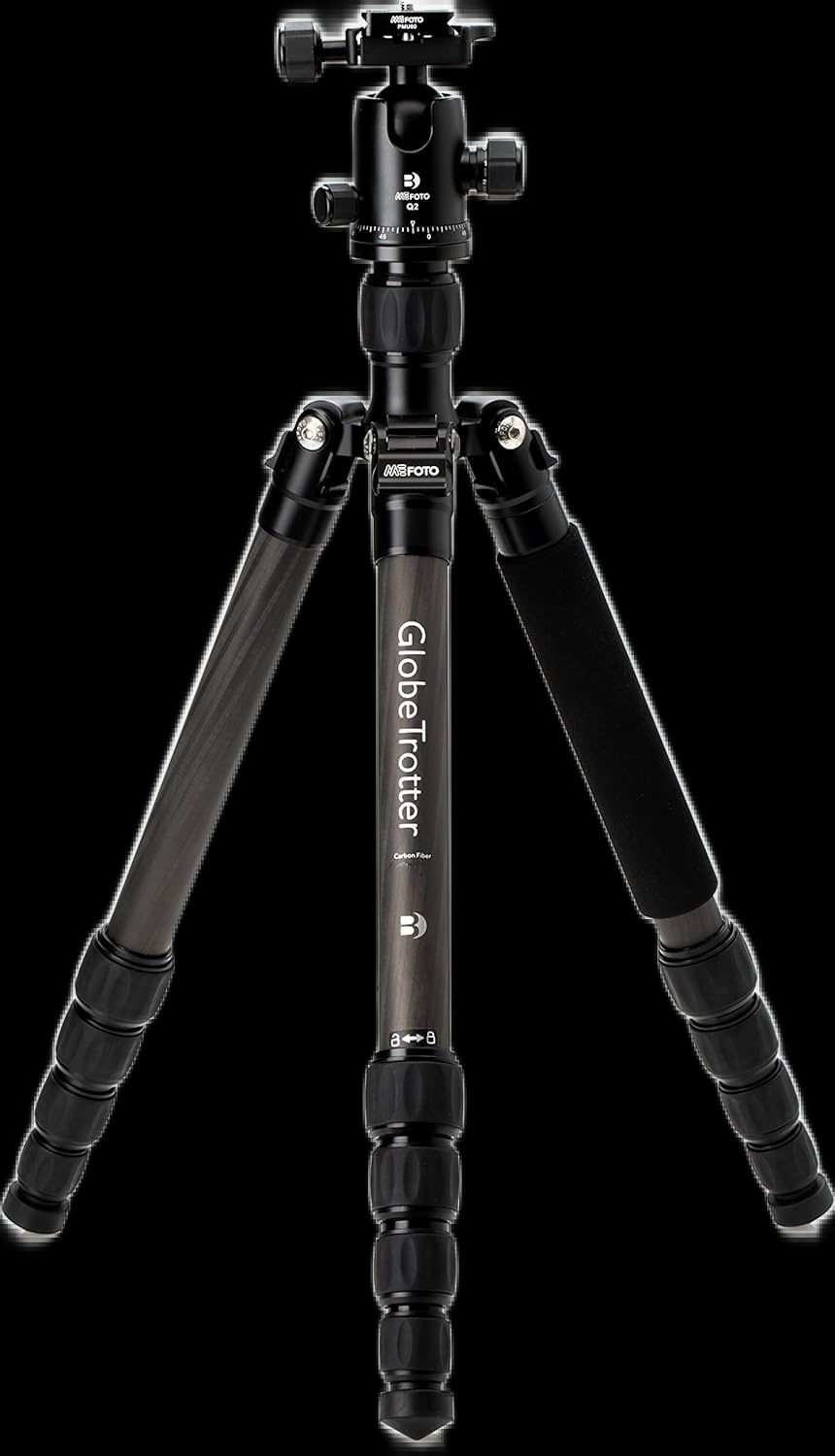 The tripod is essential photography gear because you can’t get sharp images in low light without one. I use two tripods; a full-sized for roadside photography, and a compact tripod for backpacking and travel. If I could only own one, I’d choose the compact tripod because it can do both. Not all tripods are sturdy enough to handle double duty though. After abusing several models over the years, natural selection has left one standing; the MeFoto Globe Trotter by Benro. After 10 years of hard excursions, it’s still going strong (though I’ve replaced a few parts). It also comes ready to go with a sturdy ball head. I recommend the carbon fiber version for its rigidity and light weight, but you can save a few bucks with aluminum.
The tripod is essential photography gear because you can’t get sharp images in low light without one. I use two tripods; a full-sized for roadside photography, and a compact tripod for backpacking and travel. If I could only own one, I’d choose the compact tripod because it can do both. Not all tripods are sturdy enough to handle double duty though. After abusing several models over the years, natural selection has left one standing; the MeFoto Globe Trotter by Benro. After 10 years of hard excursions, it’s still going strong (though I’ve replaced a few parts). It also comes ready to go with a sturdy ball head. I recommend the carbon fiber version for its rigidity and light weight, but you can save a few bucks with aluminum.
As tripod size and weight decrease, so does stability. Ultra lightweight tripods are little more than an elevated platforms for your camera. As for stability, most wiggle when you touch the camera, and are useless in wind. I see many of these come through my workshops. Most, including even some popular models with good reviews, are in reality fragile and wobbly. The Globetrotter may not be the smallest and lightest, but it’s as compact as I’m willing to go without sacrificing stability.
Full-sized Tripod-Benro Mammoth
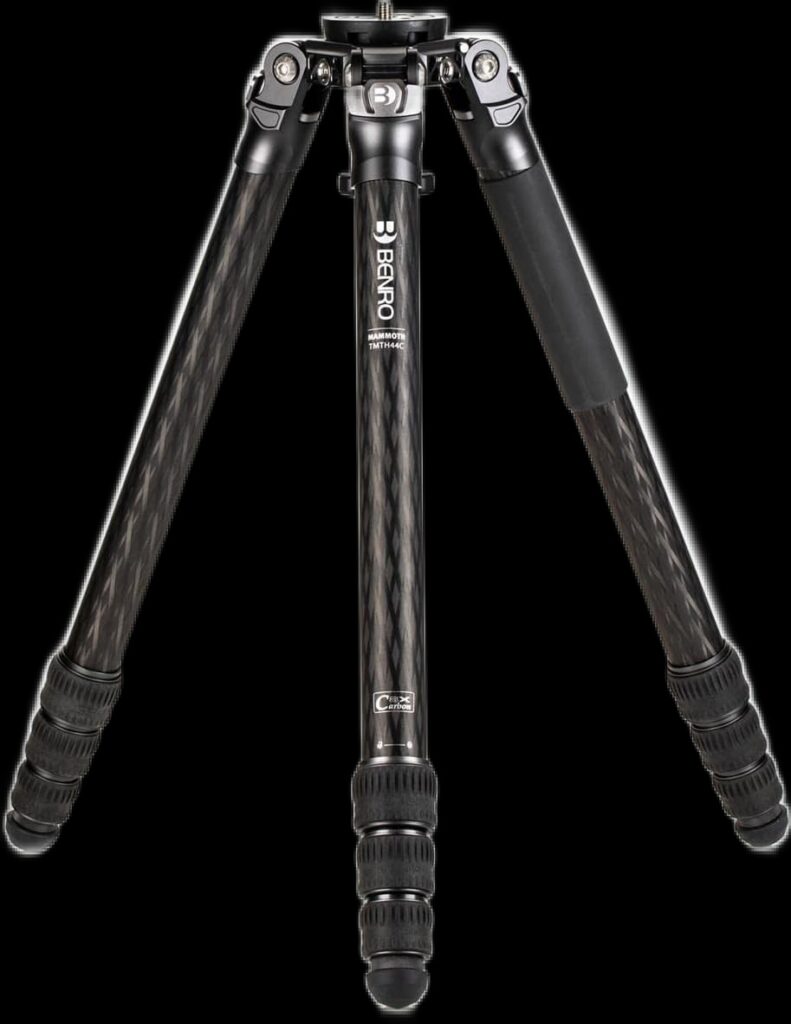 Full-sized tripods are for situations that demand the sturdiest possible design with minimal chance of vibrations. Being heavier and larger than compact tripods, they’re better suited to short hikes and roadside photography.
Full-sized tripods are for situations that demand the sturdiest possible design with minimal chance of vibrations. Being heavier and larger than compact tripods, they’re better suited to short hikes and roadside photography.
The Benro Mammoth makes the list of best gear for landscape photography because it offers the performance and features of creme de la creme tripods for less. It’s made of carbon fiber for rigidity and light weight. It extends to a respectable height of 63″. With the addition of a head and camera, this tripod is plenty tall for beanstalks. There’s no center column, making it even more stable, and able to collapse to only 11″ above the ground. My favorite feature is that in lieu of the center column, you get an integral leveling base. The first leg section is a beefy 36mm, yet the Mammoth’s total weight is only ~5 Lbs. It also has twist locks rather than flip locks, which virtually never break or loosen. It even comes with both standard and spike feet!
If money is not object, the Really Right Stuff Versa Series is the industry standard tripod, but I think the Mammoth stands on equal footing.
Ball-head-ARCA-ArcaSwiss Monoball Z1
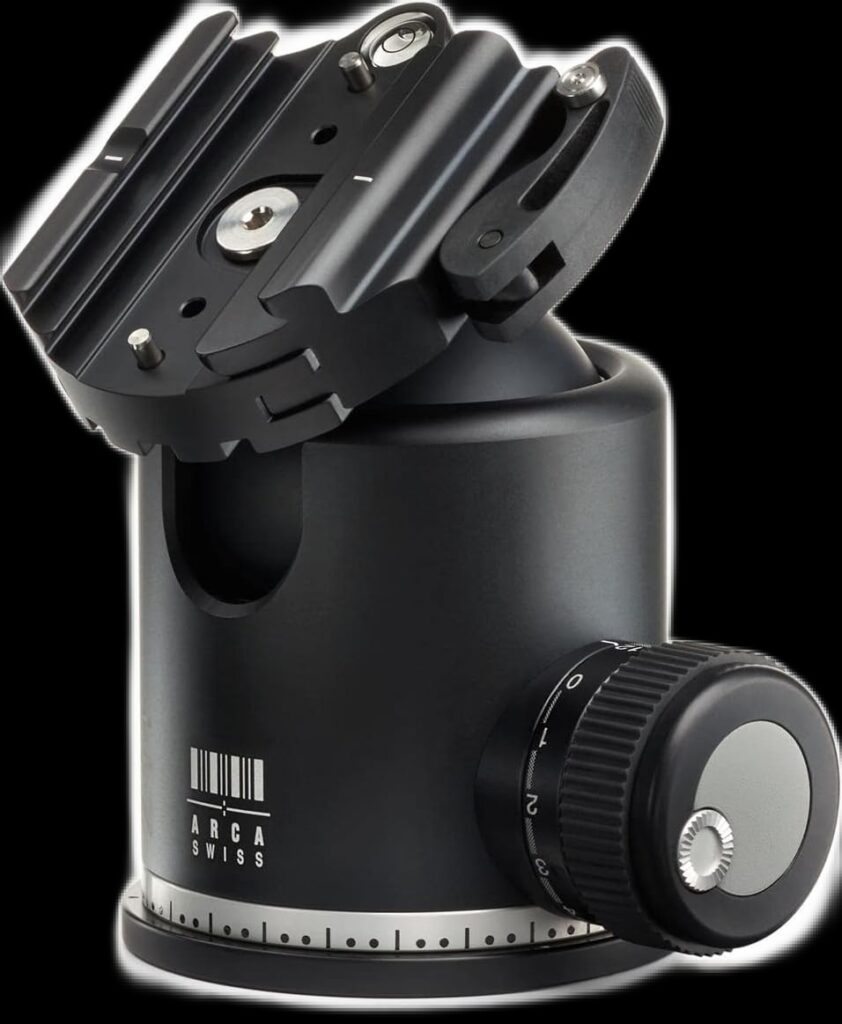 A sturdy tripod head is just as important as the tripod itself for nailing vibration free photos. The mark of a good ball-head is being able to support a heavy rig without slipping. I’ve been using the Z1 for several years and love it because a quick rotation of the dial locks my camera in place for dear life. This is one of the best ball-heads that money can buy. If you’re looking for a budget friendly head that’s nearly as good, check out the Benro GX35.
A sturdy tripod head is just as important as the tripod itself for nailing vibration free photos. The mark of a good ball-head is being able to support a heavy rig without slipping. I’ve been using the Z1 for several years and love it because a quick rotation of the dial locks my camera in place for dear life. This is one of the best ball-heads that money can buy. If you’re looking for a budget friendly head that’s nearly as good, check out the Benro GX35.
Panoramic Head–Sunway Photo Leveling Base
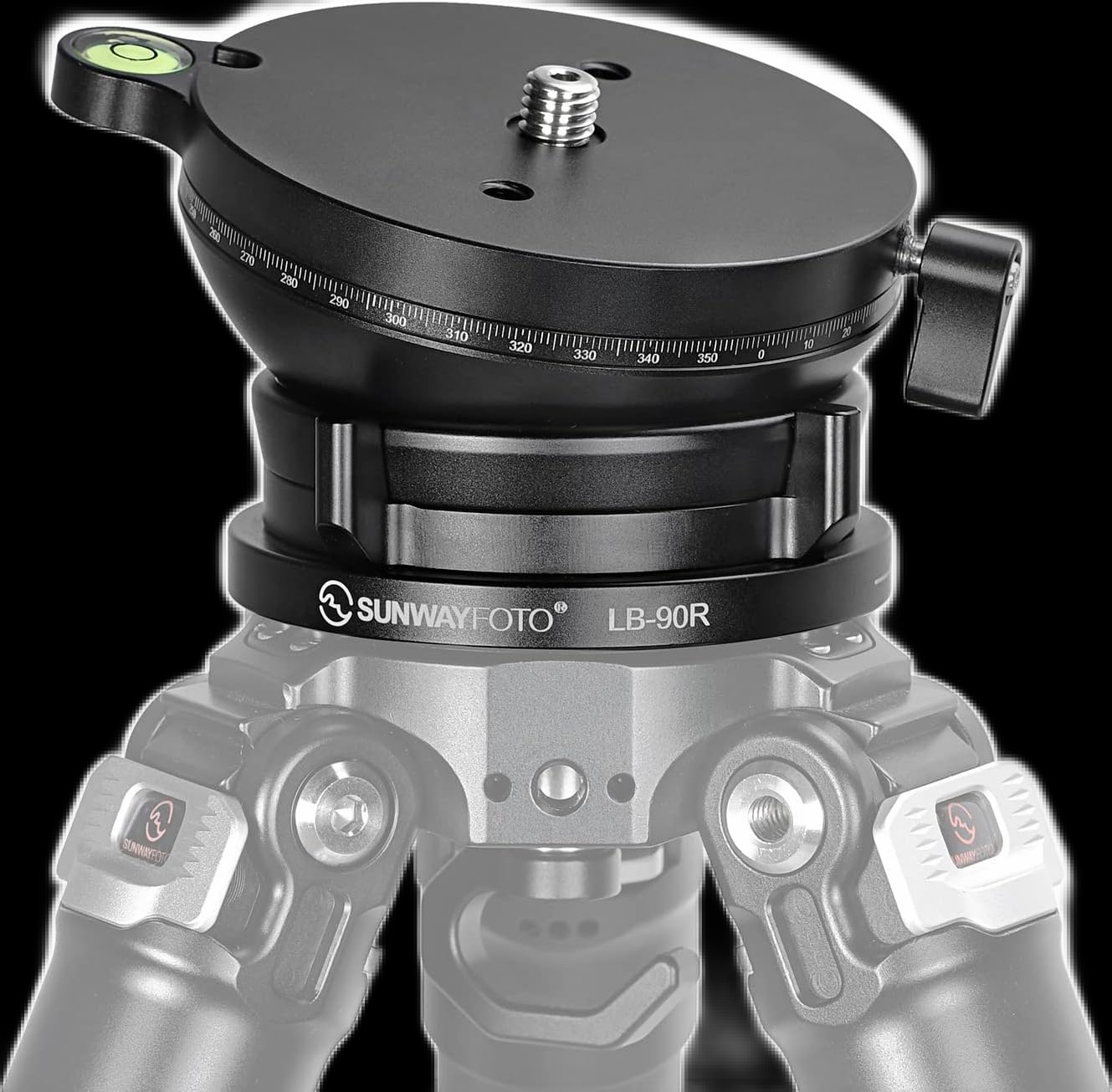 A panoramic leveling base allows fast, perfect leveling for shooting single-row panoramic landscape photos. This is a powerful upgrade for any tripod that doesn’t already have an integral leveler. Panoramics capture wide, ultra-high resolution images. The process involves mounting your camera vertically, then panning as you stop to take overlapping photos from one side to the other. An imaging app like Lightroom seamlessly merges the images into a single, composite photo. For this to work, your camera must be absolutely level. Trying to level your tripod on uneven ground by extending the tripod legs is tedious and imprecise. You also won’t get a straight panoramic if you just level the camera on the tripod head without leveling the tripod itself.
A panoramic leveling base allows fast, perfect leveling for shooting single-row panoramic landscape photos. This is a powerful upgrade for any tripod that doesn’t already have an integral leveler. Panoramics capture wide, ultra-high resolution images. The process involves mounting your camera vertically, then panning as you stop to take overlapping photos from one side to the other. An imaging app like Lightroom seamlessly merges the images into a single, composite photo. For this to work, your camera must be absolutely level. Trying to level your tripod on uneven ground by extending the tripod legs is tedious and imprecise. You also won’t get a straight panoramic if you just level the camera on the tripod head without leveling the tripod itself.
L-bracket–Arca Swiss Type
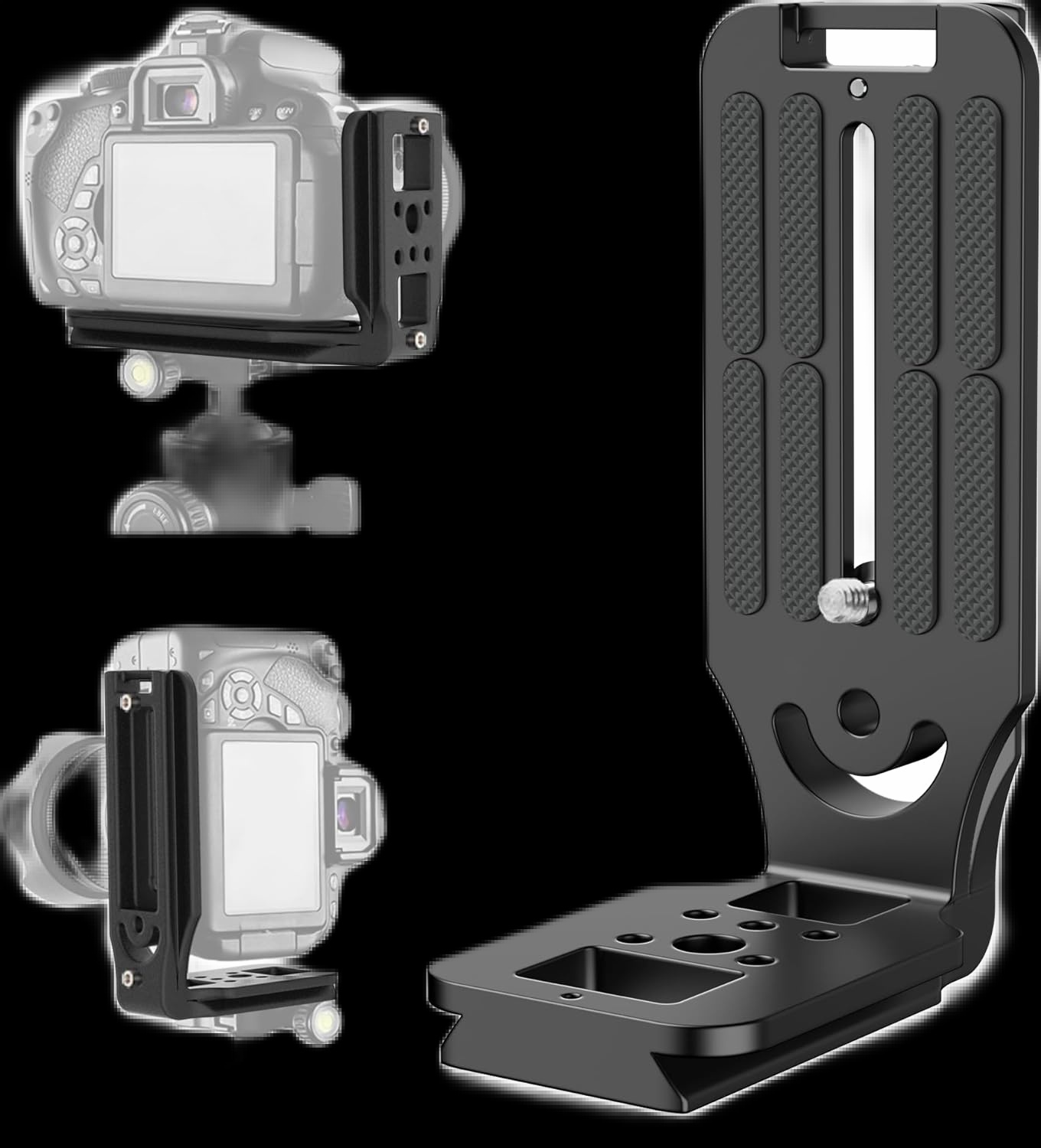 Since you need a base-plate anyway, you might as well use an L-bracket. Without one, you have to awkwardly tilt your camera sideways on your tripod head to shoot vertical compositions. This reduces stability and can introduce camera shake. An L-bracket lets you switch seamlessly between shooting vertical and horizontal. It also lets you position your camera vertically to shoot single-row panoramics. L-brackets aren’t universal; you have to get one specific to your camera body.
Since you need a base-plate anyway, you might as well use an L-bracket. Without one, you have to awkwardly tilt your camera sideways on your tripod head to shoot vertical compositions. This reduces stability and can introduce camera shake. An L-bracket lets you switch seamlessly between shooting vertical and horizontal. It also lets you position your camera vertically to shoot single-row panoramics. L-brackets aren’t universal; you have to get one specific to your camera body.
Quick Release Camera Strap–Peak Design Slide
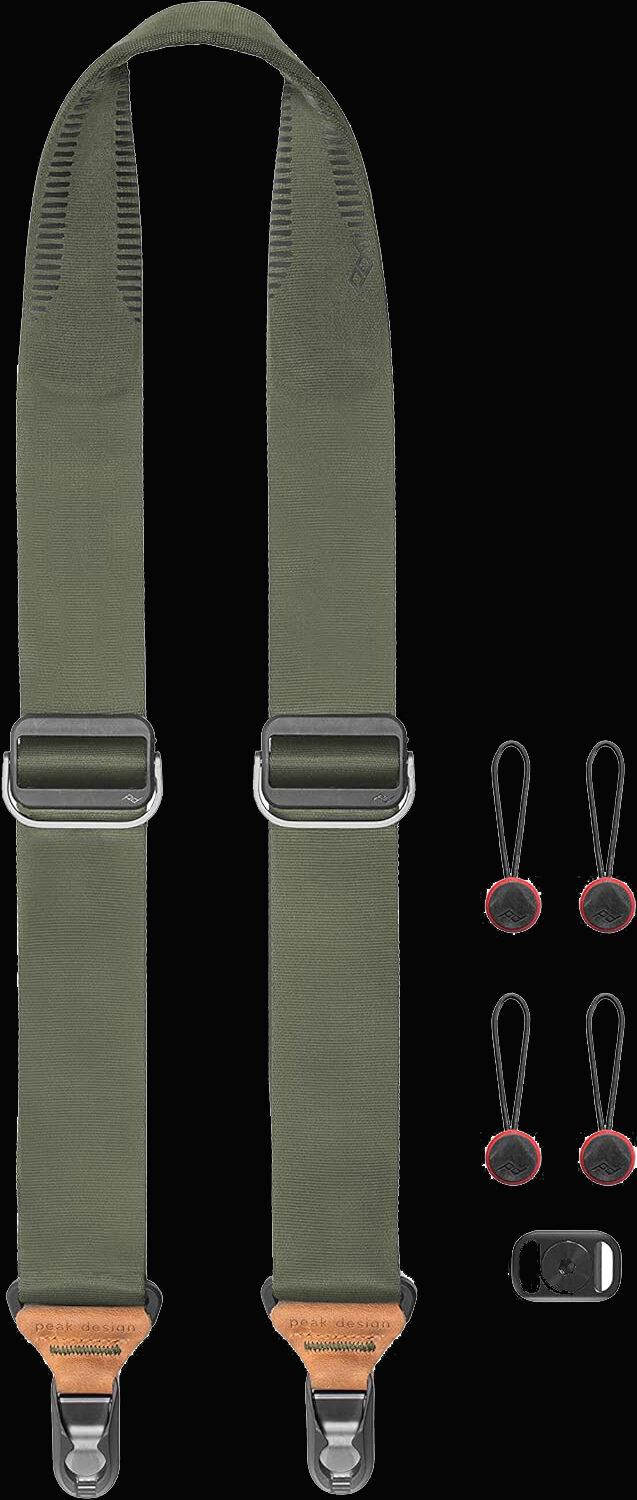 A strap is a useful way to carry your camera while walking around, but but you need to be able to quickly detach it when it’s in the way. When your camera is on a tripod, the strap acts like a wind sail that amplifies vibrations. The Peak Design Slide is nice and wide to comfortably support the weight of my full-frame camera, and the quick release joints are easy to disconnect. The olive green and brown leather combo also looks great.
A strap is a useful way to carry your camera while walking around, but but you need to be able to quickly detach it when it’s in the way. When your camera is on a tripod, the strap acts like a wind sail that amplifies vibrations. The Peak Design Slide is nice and wide to comfortably support the weight of my full-frame camera, and the quick release joints are easy to disconnect. The olive green and brown leather combo also looks great.
Remote Shutter Release–Pixel 283
![]() The Pixel 283 offers all you could want in a remote shutter for a bargain, and comes in versions for most cameras. It’s not just for taking pictures without physically pressing the button; you can use the camera’s self-time for that. It’s a must if you’re interested in shooting time-lapses, star trails, or long exposures in bulb mode. A remote shutter release allows setting up custom shooting sequences that your camera isn’t capable of. For example, most cameras don’t allow exposures longer than 30 sec in time-lapse mode, i.e. no bulb mode for time-lapse. But for star trails, you need 60 to 120 sec exposures to reduce the amount of images to process. A remote shutter also allows bracketing while shooting time lapses for creating HDR/blends. For wildlife photography, you can use it to trigger the camera while you stand hundreds of feet away.
The Pixel 283 offers all you could want in a remote shutter for a bargain, and comes in versions for most cameras. It’s not just for taking pictures without physically pressing the button; you can use the camera’s self-time for that. It’s a must if you’re interested in shooting time-lapses, star trails, or long exposures in bulb mode. A remote shutter release allows setting up custom shooting sequences that your camera isn’t capable of. For example, most cameras don’t allow exposures longer than 30 sec in time-lapse mode, i.e. no bulb mode for time-lapse. But for star trails, you need 60 to 120 sec exposures to reduce the amount of images to process. A remote shutter also allows bracketing while shooting time lapses for creating HDR/blends. For wildlife photography, you can use it to trigger the camera while you stand hundreds of feet away.
Extra Batteries–Small Rig Charger Set
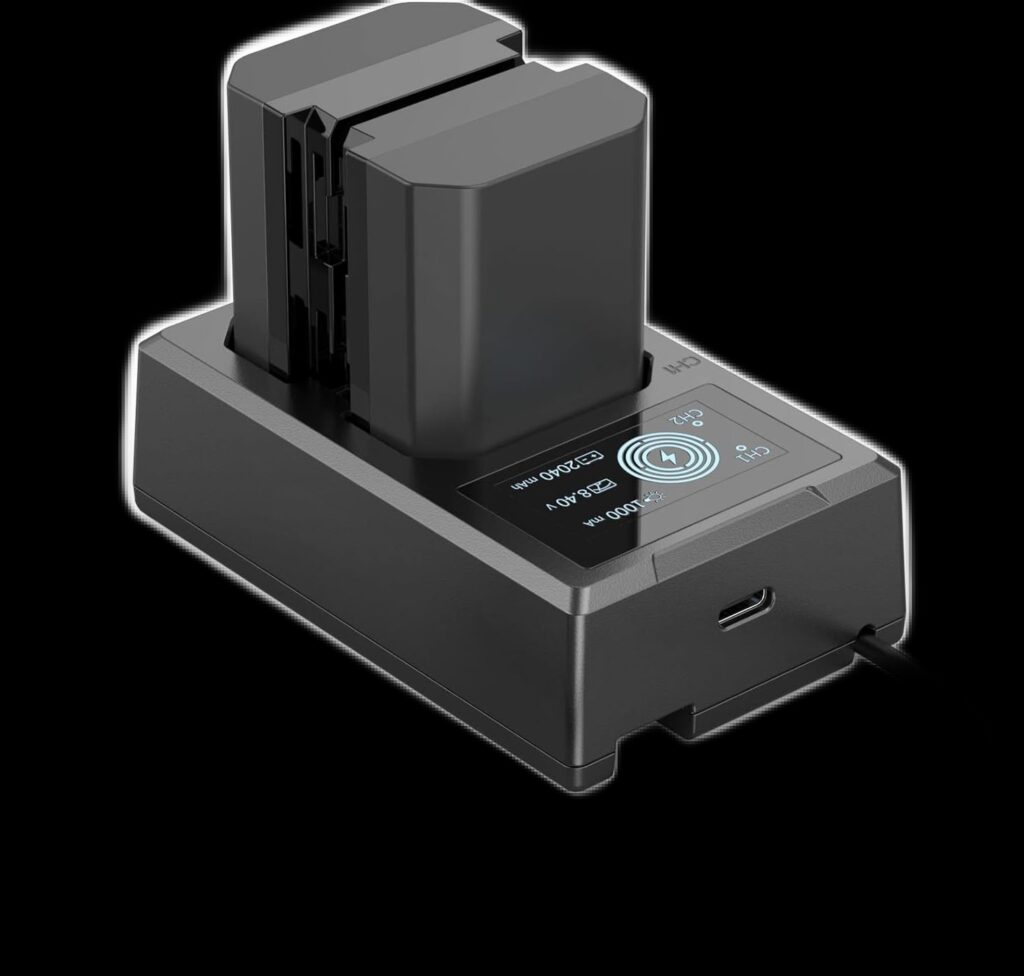 This set comes with 2 batteries and a durable charger that can be charged in your vehicle, and comes in versions for most cameras. Extra batteries are essential photography gear because you won’t get far with just the one that came with your camera. OEM batteries are very expensive, and bargain batteries may only hold half the charge. Several cheap chargers have simply broken on me. The Small Rig Batteries hold nearly as much juice as branded batteries and the sturdy charger simultaneously fuels 2 batteries in your vehicle or home. You also get a display that tells you charging progress rather than just a red or green light.
This set comes with 2 batteries and a durable charger that can be charged in your vehicle, and comes in versions for most cameras. Extra batteries are essential photography gear because you won’t get far with just the one that came with your camera. OEM batteries are very expensive, and bargain batteries may only hold half the charge. Several cheap chargers have simply broken on me. The Small Rig Batteries hold nearly as much juice as branded batteries and the sturdy charger simultaneously fuels 2 batteries in your vehicle or home. You also get a display that tells you charging progress rather than just a red or green light.
Lens Cleaning– Rocket Blower and ZEISS Wipes
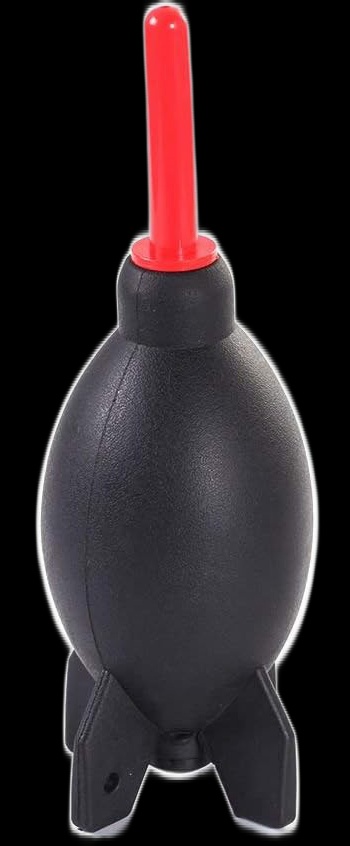 After enough time spent in the field, your lens will become covered in dust and other blemishes. You should always carry tools to clean it beyond just a chamois. The first step before physically touching the lens is puffing it off with a blower. This avoids smudging any specs of dirt across the lens. Smudged dirt, water spots and skin oil require cleaning with an alcohol wipe.
After enough time spent in the field, your lens will become covered in dust and other blemishes. You should always carry tools to clean it beyond just a chamois. The first step before physically touching the lens is puffing it off with a blower. This avoids smudging any specs of dirt across the lens. Smudged dirt, water spots and skin oil require cleaning with an alcohol wipe.
Camera Rain Cover–Movo Rain Cover
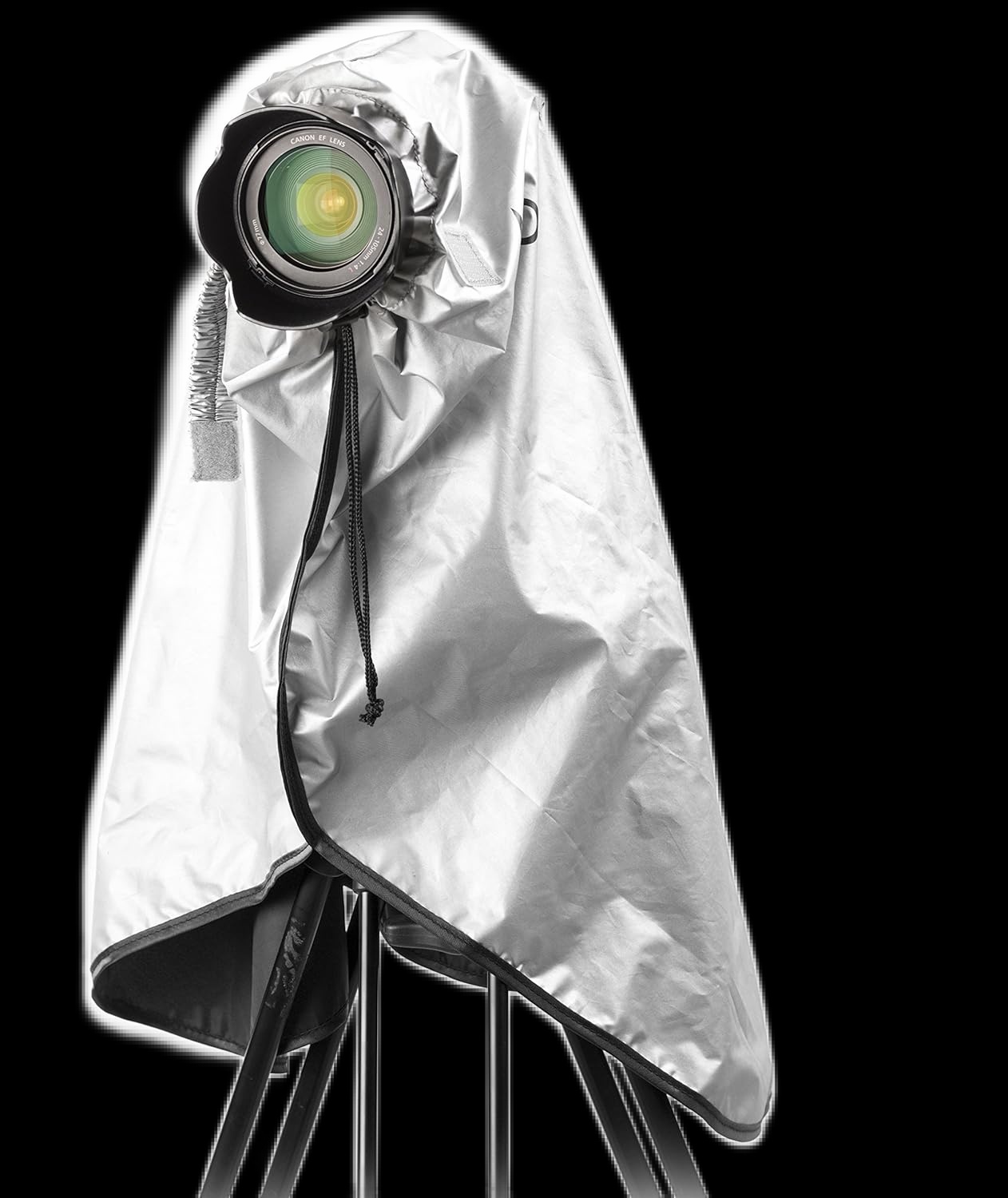 A rain cover is necessary to protect your precious camera when you must endure bad weather to get the shot. It’s also handy for shooting long time-lapses as insurance against rain moving in during the sequence. With a rain cover, only the front element of the lens is exposed to the elements. You can work the controls though a window in the back.
A rain cover is necessary to protect your precious camera when you must endure bad weather to get the shot. It’s also handy for shooting long time-lapses as insurance against rain moving in during the sequence. With a rain cover, only the front element of the lens is exposed to the elements. You can work the controls though a window in the back.
Camera Harness–Cotton Carrier Skout G2
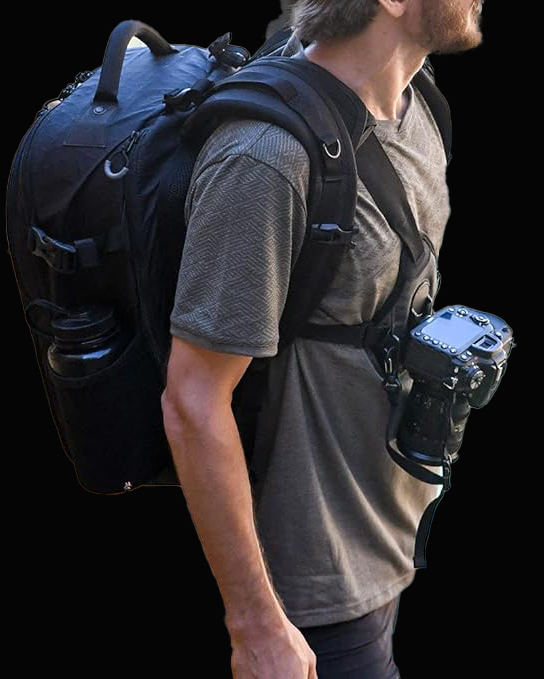 When you’re hiking for a long time with a pack, a regular camera sling doesn’t cut it because there’s not enough room for your camera on your side. It causes the weight of your camera to hurt your neck and the camera slides down every time you bend over. A camera harness keeps the camera securely connected to your chest with its weight evenly balanced. I find Cotton Carriers particularly useful for macro photography because I constantly contort my body at odd angles to get the perspective that I want. You can choose a configuration that works for you, including harness or vest.
When you’re hiking for a long time with a pack, a regular camera sling doesn’t cut it because there’s not enough room for your camera on your side. It causes the weight of your camera to hurt your neck and the camera slides down every time you bend over. A camera harness keeps the camera securely connected to your chest with its weight evenly balanced. I find Cotton Carriers particularly useful for macro photography because I constantly contort my body at odd angles to get the perspective that I want. You can choose a configuration that works for you, including harness or vest.
Flash–Godox 350
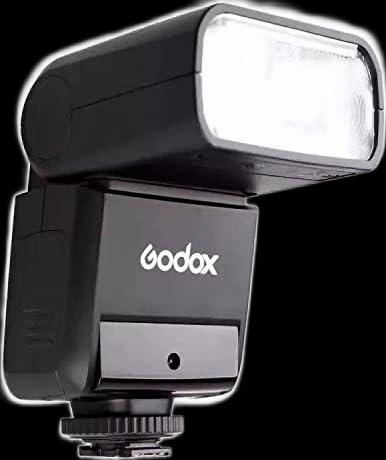 I carry this small flash for macro photography. It’s a very basic flash that isn’t high-end or powerful. That’s the point; it’s compact, easy to use and has plenty of light output for close-up subjects. Since I’m not a fashion photographer, I don’t need the advanced features of system flashes that makes them so expensive. When using the 350 for macro photography, coupling it with a flash diffuser creates even, natural-looking light with smooth shadows.
I carry this small flash for macro photography. It’s a very basic flash that isn’t high-end or powerful. That’s the point; it’s compact, easy to use and has plenty of light output for close-up subjects. Since I’m not a fashion photographer, I don’t need the advanced features of system flashes that makes them so expensive. When using the 350 for macro photography, coupling it with a flash diffuser creates even, natural-looking light with smooth shadows.
Macro Adapter–Raynox 250
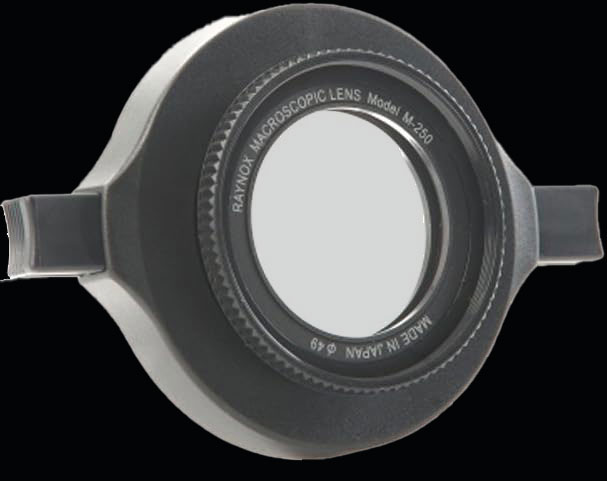 The Raynox 250 is essentially a magnifying glass that attaches to the front of any lens, turning it into a macro lens. This lets you capture 1:1 life-size images with a normal zoom lens. Attaching it to a macro lens begets a whopping 2:1 magnification. This is enough to fill the entire frame with a small insect. It’s a very small piece of gear that requires no expertise to use, and is a savior to have with you when an unexpected opportunity for macro photography presents itself.
The Raynox 250 is essentially a magnifying glass that attaches to the front of any lens, turning it into a macro lens. This lets you capture 1:1 life-size images with a normal zoom lens. Attaching it to a macro lens begets a whopping 2:1 magnification. This is enough to fill the entire frame with a small insect. It’s a very small piece of gear that requires no expertise to use, and is a savior to have with you when an unexpected opportunity for macro photography presents itself.
Photo Editing Laptop
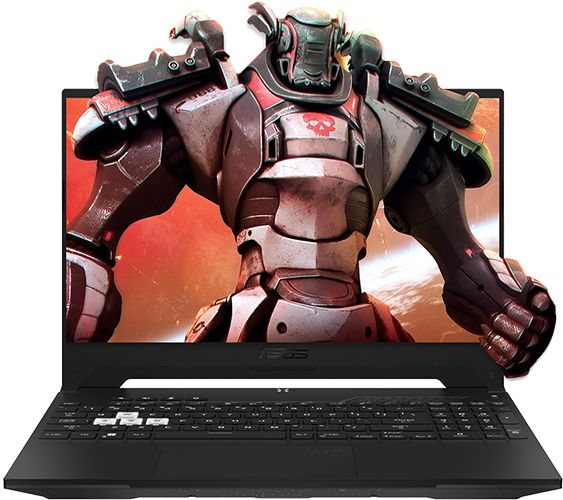 I bring a laptop on trips longer than a few nights to edit my photos. Being able to cull and rate them as the trip progresses saves time compared to dealing with all of them at once after the trip. It also makes down-time highly productive, like during mid-day. It takes a powerful machine with particular features to efficiently edit photos without bogging down. Some operations that can muddle or crash slower machines include generating preview images in Lightroom, working with large RAW files, opening many layers in Photoshop, merging panoramic composites, and AI rendering. I’ve diced it every way, and the entry point for a PC gaming laptop sufficient for photo editing is around $1,600. It’s impossible to recommend a specific model or components because they change too often, but these are the basic specs to look for:
I bring a laptop on trips longer than a few nights to edit my photos. Being able to cull and rate them as the trip progresses saves time compared to dealing with all of them at once after the trip. It also makes down-time highly productive, like during mid-day. It takes a powerful machine with particular features to efficiently edit photos without bogging down. Some operations that can muddle or crash slower machines include generating preview images in Lightroom, working with large RAW files, opening many layers in Photoshop, merging panoramic composites, and AI rendering. I’ve diced it every way, and the entry point for a PC gaming laptop sufficient for photo editing is around $1,600. It’s impossible to recommend a specific model or components because they change too often, but these are the basic specs to look for:
- Processor-Latest gen with at least 4 cores.
- RAM-32 GB or more
- CPU/Graphics Card-Dedicated
- Storage (Hard Drive)-At least 1TB HDD for photo storage, and separate 250 GB SSD (or greater) to store the operating system and apps
- Size-15″ is the best compromise between portability and visibility, and the max for working on planes and small places.
- Resolution-Higher resolution makes editing easier so aim for higher than standard HD 1920 x 1080

